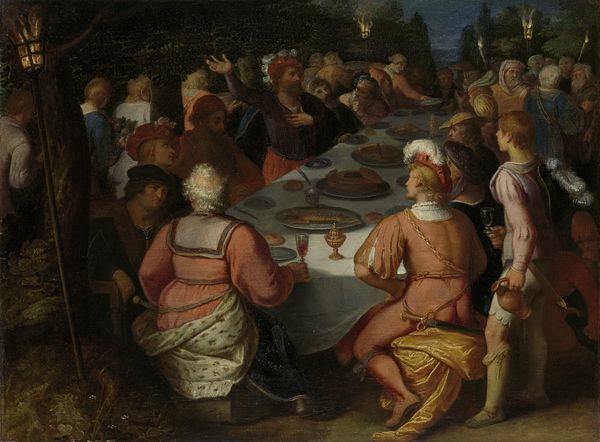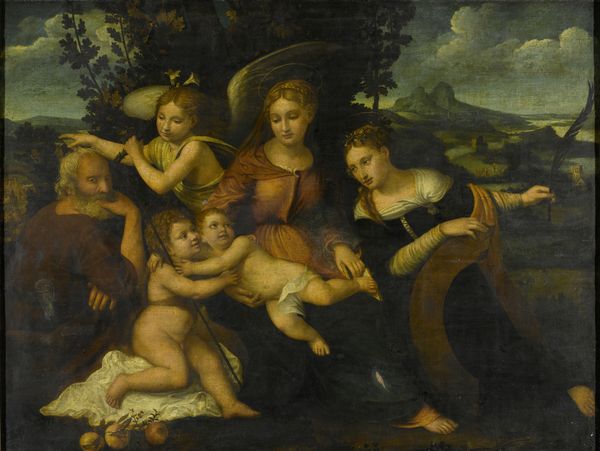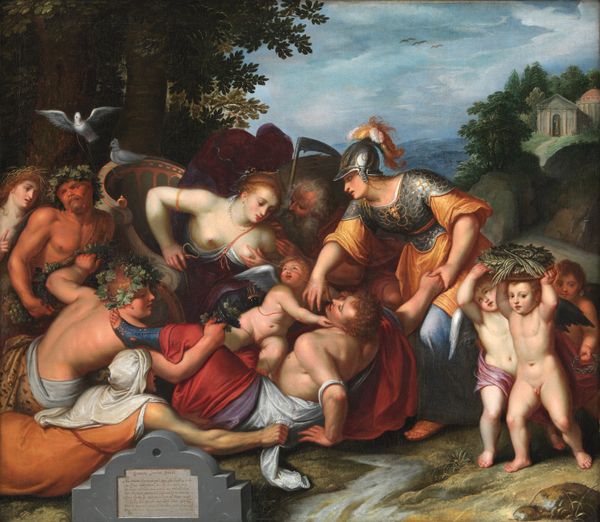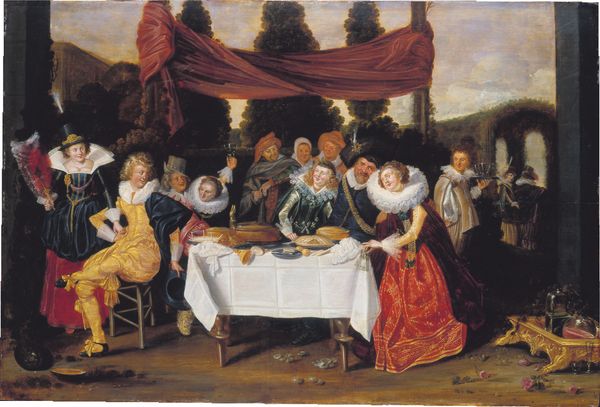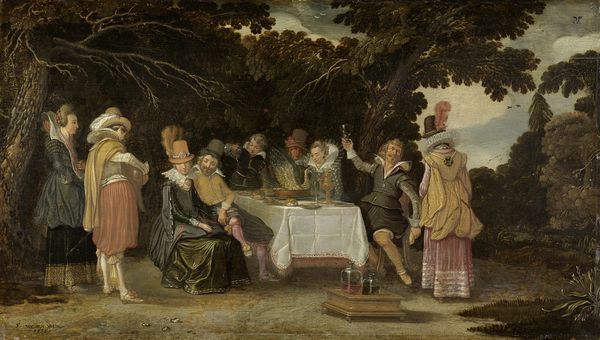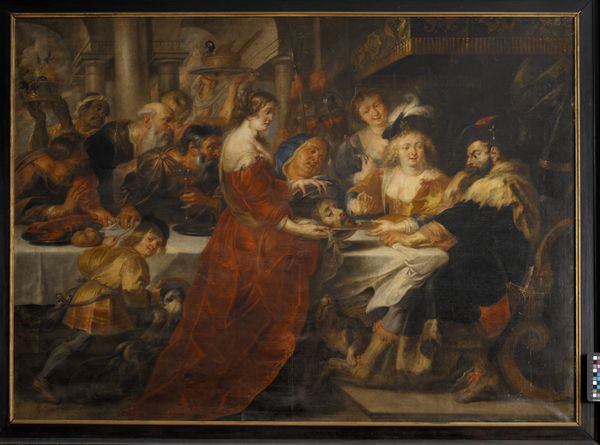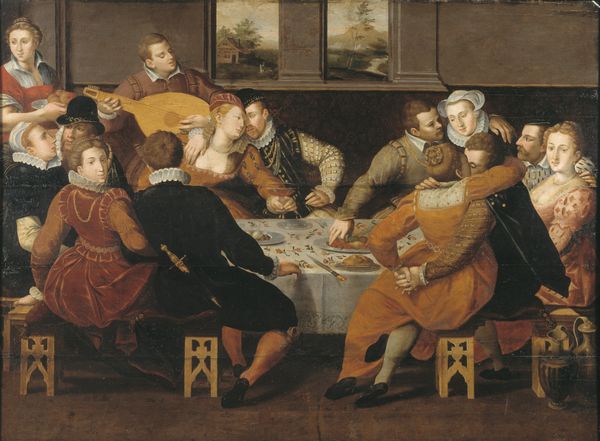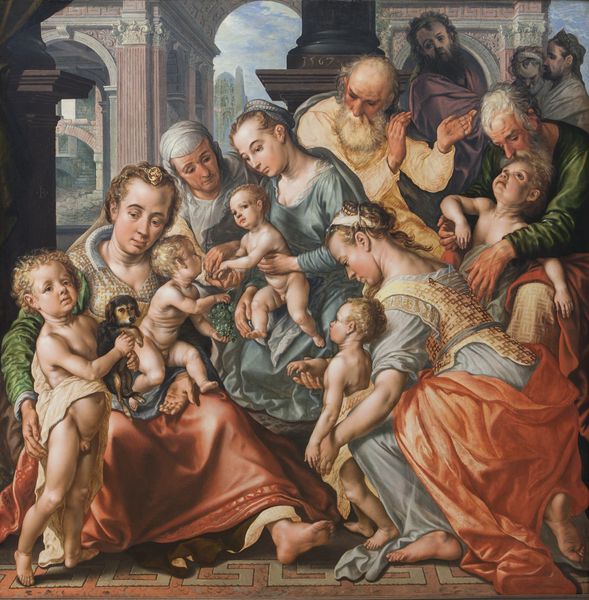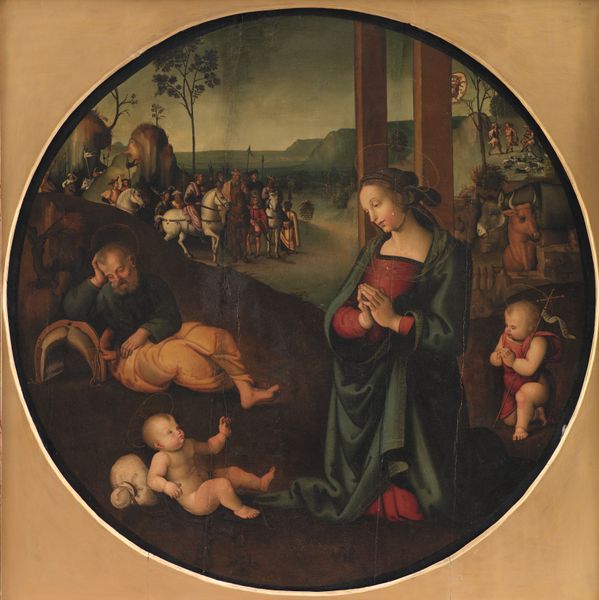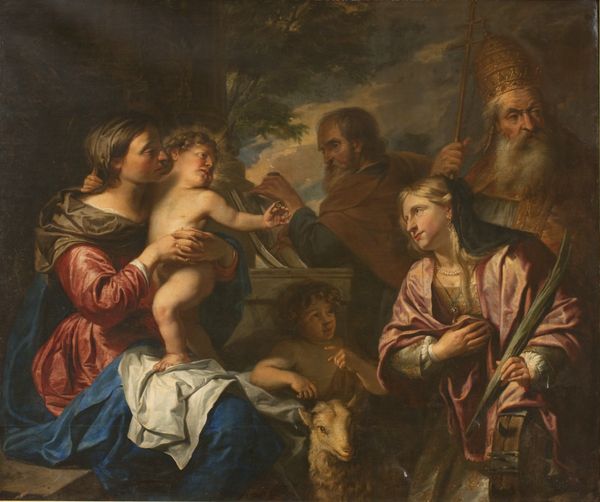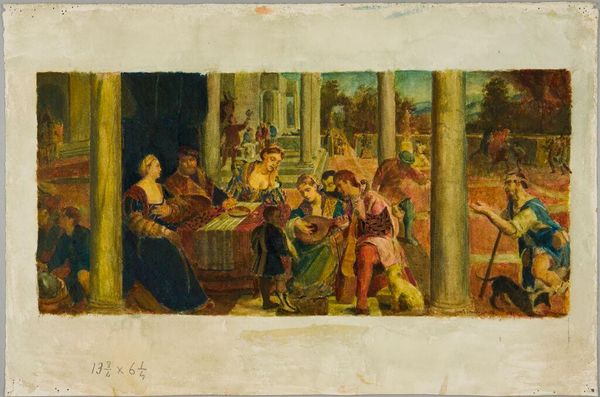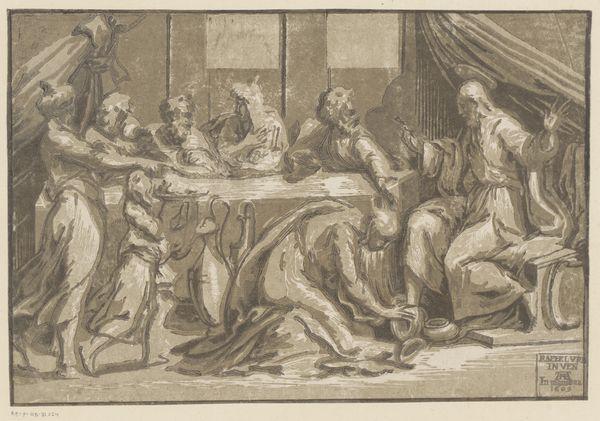
painting, oil-paint
#
baroque
#
painting
#
oil-paint
#
figuration
#
oil painting
#
history-painting
#
portrait art
Dimensions: height 38 cm, width 52 cm
Copyright: Rijks Museum: Open Domain
Curator: Before us is Otto van Veen’s, "A Nocturnal Banquet," believed to have been painted between 1600 and 1613. It's currently held at the Rijksmuseum. What are your initial thoughts? Editor: It’s oddly staged, isn’t it? Like a play caught mid-scene. There's a theatrical lighting and costuming; it all seems slightly… precarious. Curator: Interesting. Precisely observing the painting's structure, notice how van Veen uses the stark contrast of light and shadow, characteristic of the Baroque style, to draw our eye to key figures and actions within the banquet. This emphasizes the dramatic tension. Editor: Absolutely. The palette, however restrained, guides you through the narrative – and the characters appear engaged in so many subplots simultaneously! I love that disoriented fellow at the bottom, clutching his sword like a relic. Curator: The artist masterfully arranges figures within a defined space, creating layers of depth. If you trace the sight lines, you'll discover that each character appears self-absorbed; and note how this serves the artist’s deeper commentary on social dynamics. Editor: Yes! Everyone's either embracing, collapsing, or gossiping. Only the central lady at the table is gazing outward; there is an unusual disconnect between the characters—do you feel it too? This detachment seems rife with narrative possibilities! Is that marital discord brewing? Curator: Possibly! Through his refined oil-paint handling and strategic placement of light and shadow, van Veen encourages viewers to decode symbolic gestures within the composition. We may never know its precise subject; its enigmatic qualities are part of the painting's allure. Editor: Definitely. Van Veen really makes you feel like an unwelcome guest spying on a drama. It is intriguing how much information about narrative context the artist suppresses... like he is almost daring us to conjure our own, wild interpretation! Curator: I think examining "A Nocturnal Banquet," one comes to appreciate Van Veen's elegant fusion of form and content—it’s Baroque aesthetic rigor. Editor: In conclusion, you come away with the urge to immediately write your own play, or start painting wild interpretations of everyone at the party! Thanks, Otto.
Comments
rijksmuseum about 2 years ago
⋮
In 1613, the Dutch parliament (States General) commissioned Otto van Veen to paint twelve paintings depicting the revolt of the Batavians against the Romans in AD 69 and 70. These were displayed in Binnenhof, the central government building in The Hague. In the early years of the Dutch Republic, many compared their own revolt against Spain to the Batavian uprising.
Join the conversation
Join millions of artists and users on Artera today and experience the ultimate creative platform.
